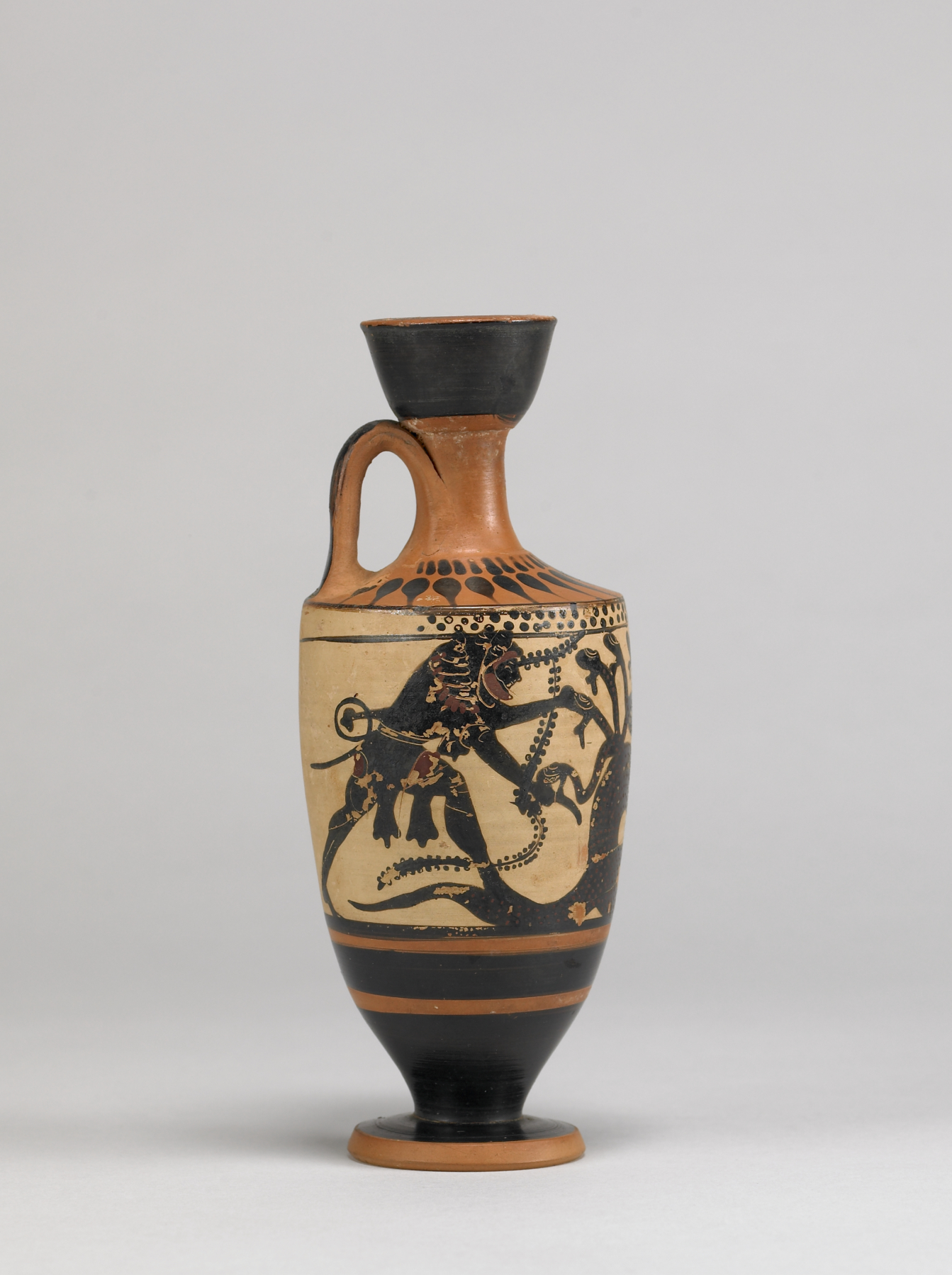Herakles and Iolaos fighting the Lernaean Hydra
(Ancient Greece )
The Hydra was a multi-headed snake-monster raised by the goddess Hera that lived in the swamps near Lerna. Up to fifty heads are reported for the creature in ancient sources, but it usually is depicted with fewer, as on this vase. Herakles, accompanied by his nephew Iolaos, killed this menace as the second of the Labors he had to perform for king Eurystheus. Herakles' lion skin protected him from the snake's venom, which he later used to make his arrows poisonous.
Provenance
Provenance (from the French provenir, 'to come from/forth') is the chronology of the ownership, custody, or location of a historical object. Learn more about provenance at the Walters.
Joseph Brummer, New York [date and mode of acquisition unknown]; Henry Walters, Baltimore, 1924, by purchase; Walters Art Museum, 1931, by bequest.
Exhibitions
| 2009-2011 | Heroes: Mortals and Myths in Ancient Greece. The Walters Art Museum, Baltimore; Frist Center for the Visual Arts, Nashville; San Diego Museum Of Art, San Diego; Alexander S. Onassis Public Benefit Foundation (USA), New York. |
Conservation
| Date | Description | Narrative |
|---|---|---|
| 8/7/1984 | Loan Consideration | examined for loan |
| 7/27/1987 | Treatment | x-ray |
| 10/20/2005 | Treatment | loss compensation; stabilized |
Geographies
Greece, Attica (Place of Origin)
Measurements
H: 6 15/16 x Diam: 2 11/16 in. (17.7 x 6.9 cm)
Credit Line
Acquired by Henry Walters, 1924
Location in Museum
Not on view
Accession Number
In libraries, galleries, museums, and archives, an accession number is a unique identifier assigned to each object in the collection.
In libraries, galleries, museums, and archives, an accession number is a unique identifier assigned to each object in the collection.
48.227






